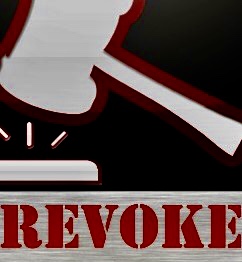Court Removes Trustee
Evans v Gonder 2010 CarswellOnt 1240 Ont C.A is unusual in that the court removed a trustee without appointing a replacement, and found that it had the authority to do so.
The case involved a conflict of interest in the trustee necessitating his removal.
In very rare cases where equity demanded that sole trustee be removed but no replacement was forthcoming,
the courts possessed the inherent jurisdiction to order a trustee’s removal and provide for orderly administration of estate
No single provision of Act, nor Act as whole, ousted inherent equitable jurisdiction of court to remove trustee.
This was true even if such removal would leave trust without trustee, so long as court ensured proper administration of estate in best interests of beneficiaries
Mitchell v. Richey, [1867] 13 Gr. 445 (U.C. Ch.), stands for the proposition that no person can be compelled to remain a trustee.
The law of trusts is a creature of equity and the Courts of Chancery. In exercising its equitable jurisdiction, a court must ensure that fairness is done for all parties. Equity is “the soul and spirit of all law … equity is synonymous with justice”: William Blackstone, 2 Commentaries on the Laws of England, 2d ed. (Chicago: Callaghan & Co., 1879), at p. 429.
The role of trustee is a difficult one. A trustee must act in the best interests of the beneficiary, even at personal hardship. However, if such obligations were unlimited, and if no relief were available, “no one would undertake the task of trusteeship”: see Donovan W.M. Waters, Waters Law of Trusts in Canada 3d ed. (Toronto: Carswell, 2005), at p. 841.
The courts have long recognized an inherent power to remove a trustee when circumstances require. In Letterstedt v. Broers (1881), 9 A.C. 371 (P.C.), Lord Blackburn stated, at pp. 386-87:
[I]f it appears clear that the continuance of the trustee would be detrimental to the execution of the trusts, even if for no other reason than human infirmity would prevent those beneficially interested, or those who act for them, from working in harmony with the trustec.it seems to their Lordships that the Court might think it proper to remove him.
In exercising so delicate a jurisdiction as that of removing trustees, their Lordships do not venture to lay down any general rule beyond the very broad principle above enunciated, that their main guide must be the welfare of the beneficiaries. Probably it is not possible to lay down any more definite rule in a matter so essentially dependent on the details often of great nicety.
When a sole remaining trustee was removed, the courts normally required a replacement trustee to be appointed. However, this was not intended to impose an additional burden to a trustee seeking to retire: see Courtenay v. Courtenay (1846), 3 Jo. & Lat. 519, at p. 533. Where no replacement could be found by the retiring trustee, the court could take it upon itself to ensure a continued administration. In cases from that era, the court would attempt to locate new trustees itself: see Gardiner v. Dowries (1856), 22 Beav. 395, 52 E.R. 1160.
[28] Alternatively, the court could take steps to obviate the need for a trustee. In Mitchell v. Rickey, Mowat V.C. permitted a sole surviving trustee to retire without appointing a replacement. Rather, he ordered that a receiver previously appointed by the court be continued, and that the trust funds be paid into court to be administered for the good of the beneficiaries.
[29] The case of Barker v. Peile (1865), 2 Dr. & Sm. 340, 62 E.R. 651 illustrates the court’s power to deal with an estate in the best interests of the beneficiaries in circumstances similar to the instant appeal. The case was summarized in the English Reports, at p. 651, in the following terms:
It appeared that the Plaintiff was the surviving trustee of a voluntary settlement – that the trust fund had always been an ascertained fund, but that many questions had arised among the parties claiming the fund, and several suits had been instituted with reference to the settlement, to all of which the Plaintiff had been made a party. The Plaintiff, under these circumstances, being desirous of avoiding further annoyance with regard to the fund, instituted the suit for administration of the fund by the Court, asking to be discharged, and, if necessary, that new trustees of the settlement might be appointed.
In that case the court ordered the discharge of the trustee in these circumstances, and took on the duty of administering the trust itself.




